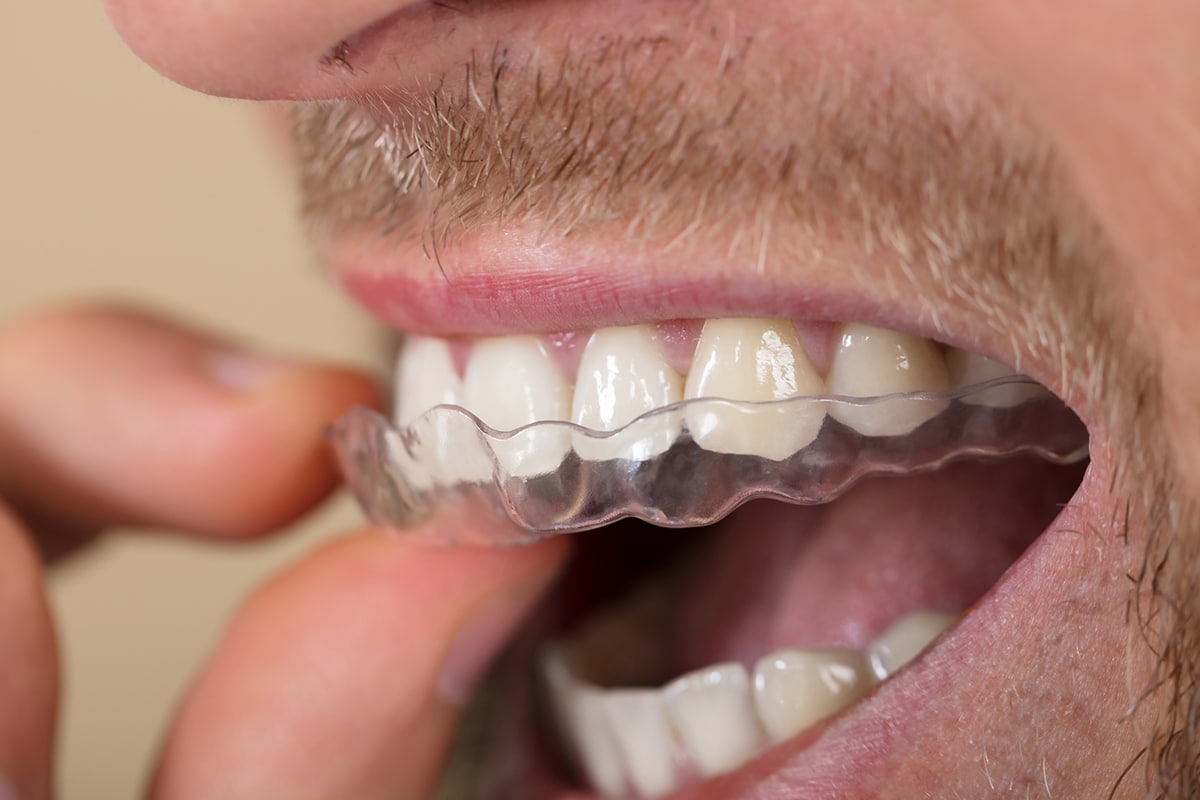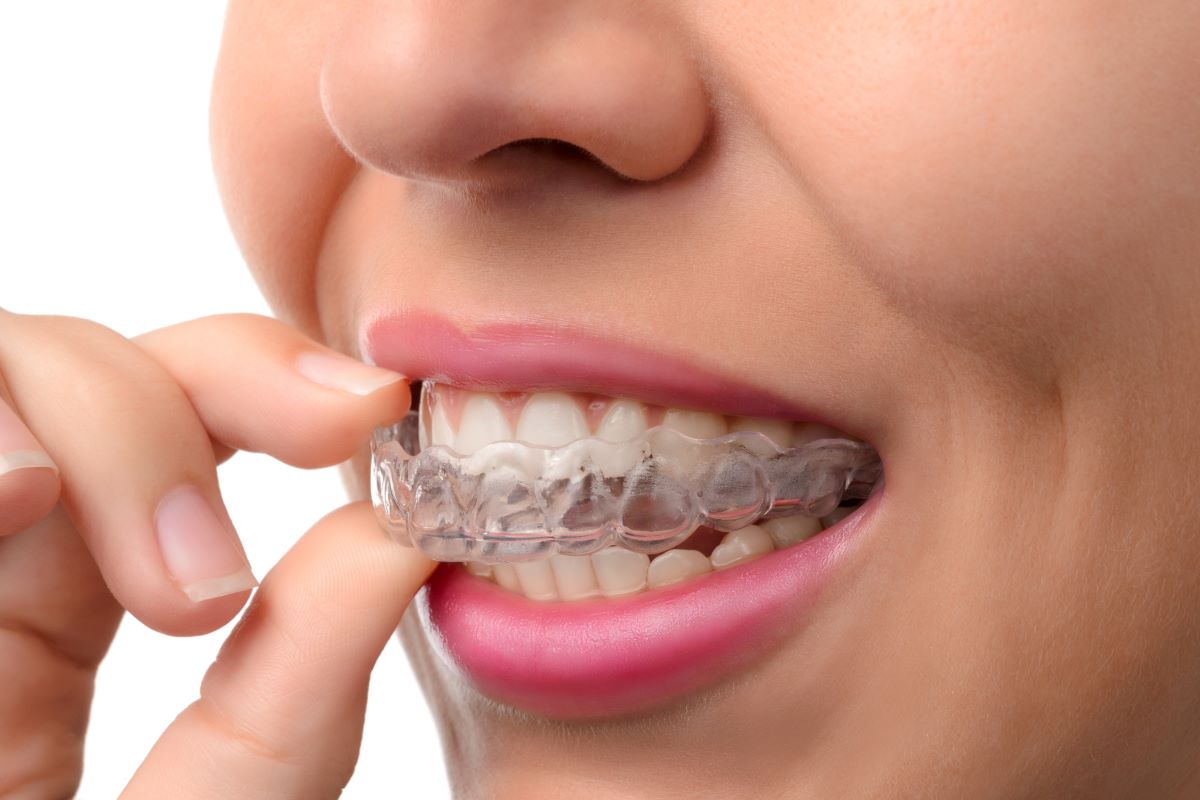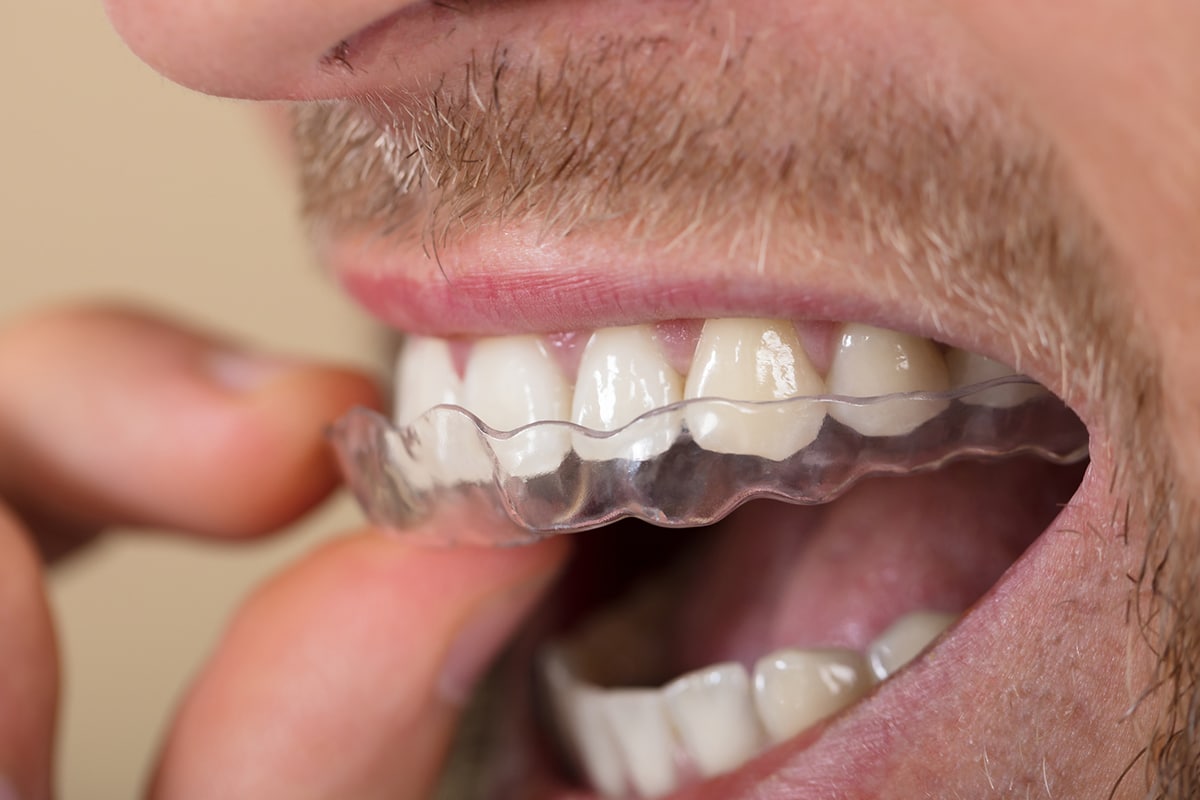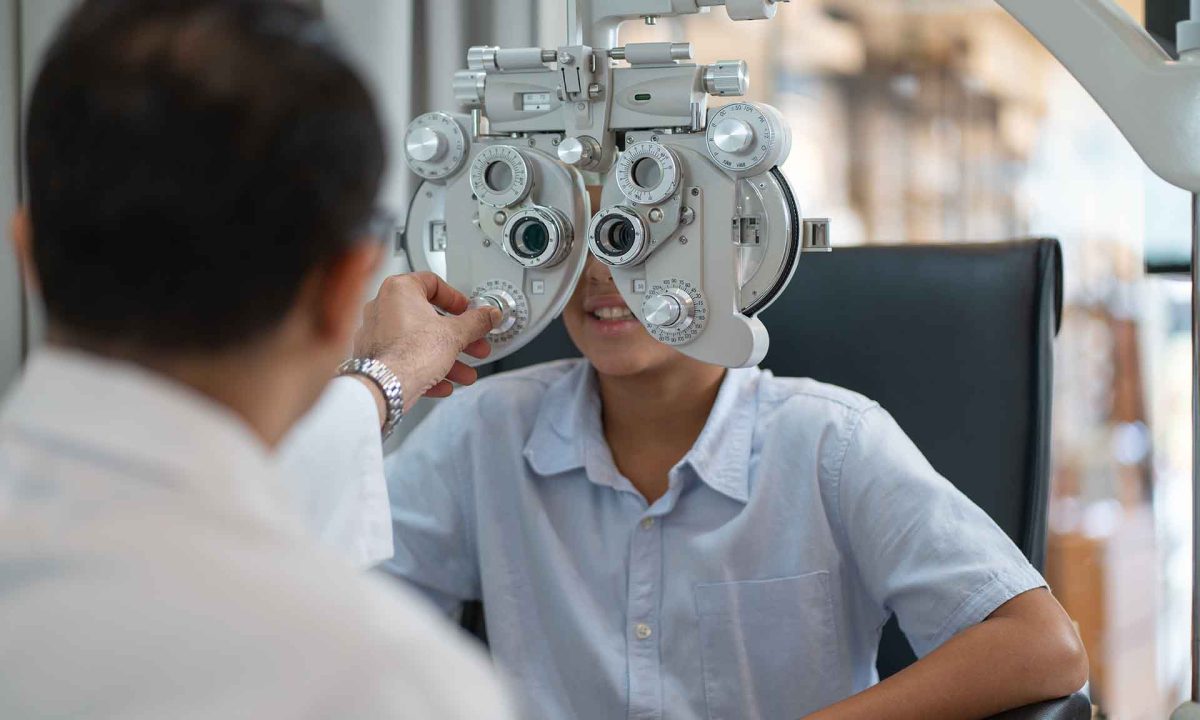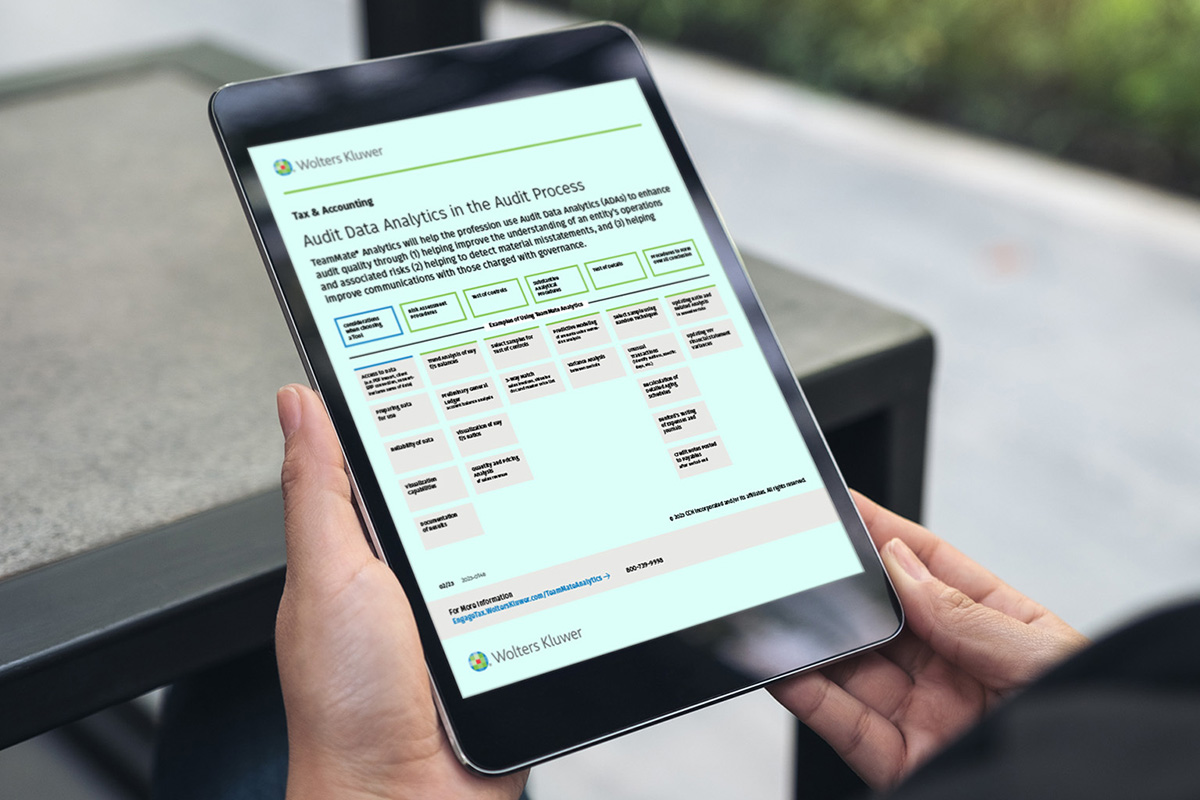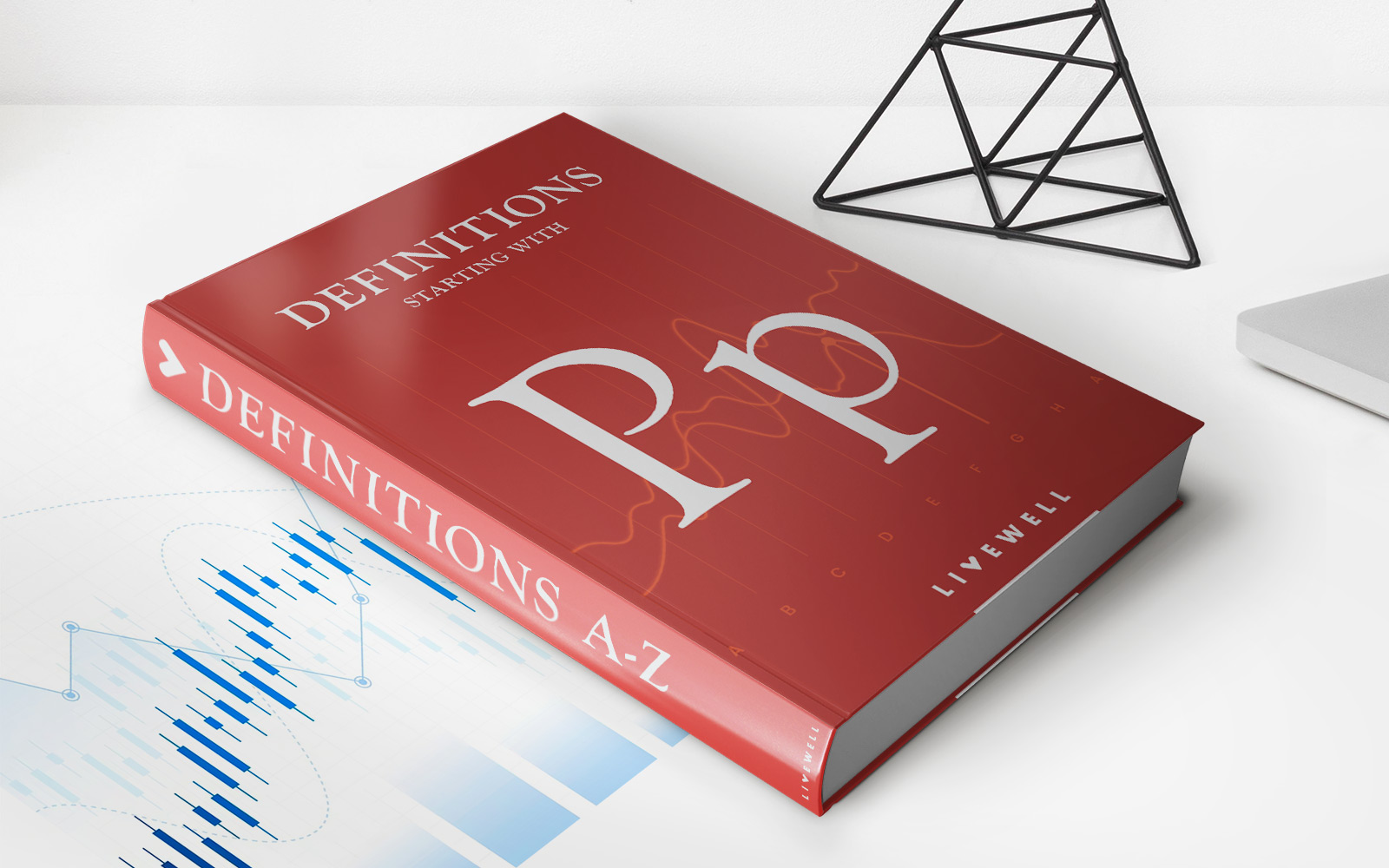

Finance
What Insurance Covers Invisalign For Adults
Modified: February 21, 2024
Protect your smile and your finances with insurance coverage for Invisalign. Get the financial support you need to achieve your dream smile as an adult.
(Many of the links in this article redirect to a specific reviewed product. Your purchase of these products through affiliate links helps to generate commission for LiveWell, at no extra cost. Learn more)
Table of Contents
- Introduction:
- Understanding Invisalign:
- Importance of Invisalign for Adults:
- Insurance Coverage for Invisalign:
- Factors to Consider When Choosing an Insurance Plan:
- Types of Insurance Plans That Cover Invisalign:
- Steps to Take When Using Insurance for Invisalign:
- Common Insurance Coverage Limitations for Invisalign:
- Conclusion:
Introduction:
Having a confident smile can have a significant impact on one’s self-esteem and overall well-being. For many adults, the alignment of their teeth might be a concern that they have carried with them for years. However, the idea of wearing traditional metal braces can be a major deterrent, especially in professional and social settings. This is where Invisalign, a popular orthodontic treatment, comes into play.
Invisalign offers a discreet and comfortable option for adults seeking to straighten their teeth and achieve the smile they desire. This innovative treatment involves wearing a series of clear, removable aligners that gradually shift the position of the teeth. Unlike traditional braces, Invisalign aligners are virtually invisible, allowing adults to maintain their confidence while undergoing orthodontic treatment.
While the benefits of Invisalign for adults are clear, the financial aspect of this treatment can be a concern for many. The cost of Invisalign can vary depending on several factors, such as the severity of the misalignment and the location of the dental provider. This is where insurance coverage can play a crucial role in making Invisalign more accessible and affordable for adults.
Insurance coverage for orthodontic treatment, including Invisalign, is not universal. Different insurance plans have varying policies regarding coverage for orthodontic procedures. However, there are certain insurance plans that do provide coverage for Invisalign, helping adults offset the cost and make achieving their dream smile more attainable.
In this article, we will explore the insurance coverage options for Invisalign for adults. We will delve into the significance of Invisalign treatment, discuss the different types of insurance plans that cover Invisalign, and outline the steps you can take when using insurance to cover your treatment. Additionally, we will address some common limitations and factors to consider when choosing an insurance plan. By the end of this article, you will have a clearer understanding of how insurance can help you obtain the smile you’ve always wanted through Invisalign.
Understanding Invisalign:
Invisalign is a revolutionary orthodontic treatment that offers a discreet and comfortable way to straighten teeth. Unlike traditional braces, which use metal brackets and wires to shift the teeth into the desired position, Invisalign utilizes a series of clear, custom-made aligners.
These aligners are created using 3D imaging technology and are designed to fit snugly over the teeth, gradually exerting gentle pressure to move them into alignment. Each set of aligners is worn for a specified amount of time, typically one to two weeks, before progressing to the next set in the series. This process continues until the desired alignment is achieved.
One of the main advantages of Invisalign is its virtually invisible appearance. The clear aligners are discreet and blend seamlessly with the teeth, making it difficult for others to notice that you are undergoing orthodontic treatment. This is especially appealing for adults who may feel self-conscious about wearing traditional braces in professional or social settings.
In addition to being less noticeable, Invisalign aligners are also removable. This means that you can take them out for important events, such as job interviews or social gatherings, without any restrictions on the food you can eat. Unlike traditional braces, there are no dietary limitations with Invisalign, as the aligners can be removed during meals.
Another benefit of Invisalign is the comfort it provides. The aligners are custom-made for each patient, ensuring a perfect fit and minimizing any discomfort commonly associated with traditional braces, such as irritation to the gums and cheeks. Additionally, with no wires or brackets to adjust, there are fewer orthodontic appointments required throughout the treatment process.
It’s important to note that Invisalign is not suitable for every orthodontic case. Complex dental issues or severe misalignment may require traditional braces or other orthodontic interventions. However, for adults with mild to moderate alignment concerns, Invisalign offers a convenient and effective option to achieve a straighter smile without the drawbacks of traditional braces.
In the following sections, we will explore the insurance coverage options for Invisalign for adults and discuss the factors to consider when choosing an insurance plan. Understanding the insurance coverage for Invisalign can help make this treatment more accessible and affordable, allowing adults to achieve the smile they’ve always wanted.
Importance of Invisalign for Adults:
Straightening teeth isn’t just a cosmetic concern; it can also have a significant impact on oral health and overall well-being. For adults, the alignment of their teeth can affect their self-confidence, speech, and even their ability to maintain proper oral hygiene. This is where Invisalign plays a crucial role in addressing these concerns and improving oral health.
One of the main benefits of Invisalign for adults is that it helps to correct misaligned teeth, reducing the risk of oral health issues such as tooth decay, gum disease, and jaw joint problems. Misaligned teeth can create spaces, overlaps, or crowded areas that make it difficult to clean and maintain oral hygiene. This can lead to a buildup of plaque and tartar, increasing the risk of tooth decay and gum inflammation.
By using Invisalign to straighten teeth, adults can achieve a more aligned and even smile, making it easier to clean and maintain good oral hygiene practices. This can lead to a decreased risk of dental problems down the line, saving adults from costly and invasive dental procedures in the future.
Another important aspect of Invisalign for adults is the impact it can have on their self-esteem and confidence. Many adults who have lived with misaligned teeth for years may feel self-conscious about their smile, which can affect their personal and professional interactions. Invisalign offers a discreet and aesthetically pleasing solution, allowing adults to straighten their teeth without drawing attention to their orthodontic treatment. This can significantly improve self-confidence and social interactions, leading to a better quality of life overall.
Furthermore, the physical benefits of Invisalign extend beyond dental health and self-esteem. Well-aligned teeth can help improve speech patterns and chewing efficiency. Properly aligned teeth ensure that the force from chewing is evenly distributed across the jaw, reducing the strain on specific teeth and preventing excessive wear and tear. Invisalign can help adults achieve a functional bite, improving their overall comfort and oral function.
Lastly, the convenience and flexibility of Invisalign make it an attractive option for adults. The removable nature of the aligners allows for easy maintenance of oral hygiene, as brushing and flossing can be done without any obstructions. Additionally, adults can remove the aligners for special occasions or important events, giving them the freedom to enjoy social situations without worrying about the appearance or restrictions of traditional braces.
Overall, Invisalign offers numerous benefits for adults seeking to improve the alignment of their teeth. From enhancing oral health and self-confidence to improving speech and chewing efficiency, Invisalign provides a convenient, effective, and discreet solution to address misalignment concerns. With the support of insurance coverage, adults can take advantage of this transformative orthodontic treatment and pave the way towards a healthier, happier smile.
Insurance Coverage for Invisalign:
When considering Invisalign as an orthodontic treatment option, it’s important to understand the insurance coverage available for this procedure. While not all insurance plans provide coverage for orthodontic treatments, including Invisalign, there are certain plans that offer partial or full coverage for these services.
Insurance coverage for Invisalign can vary depending on the specific insurance plan and the individual’s policy. It’s crucial to review your insurance policy and consult with your insurance provider to understand the extent of coverage and any limitations or exclusions that may apply.
Many dental insurance plans categorize orthodontic treatment, including Invisalign, as a form of cosmetic dentistry. As a result, coverage for these procedures may be limited or not covered at all. However, some insurance plans recognize the functional benefits of orthodontic treatment and provide at least partial coverage for these services.
In some cases, insurance plans may cover a fixed dollar amount or a percentage of the total cost of Invisalign. This coverage can help offset the expenses associated with consultations, X-rays, impressions, aligner fabrication, and follow-up appointments.
It’s important to note that insurance coverage is often subject to certain limits, waiting periods, and deductibles. Some plans may have an age limit for orthodontic coverage, while others may require pre-authorization or a detailed treatment plan from an orthodontist before approving coverage for Invisalign.
Often, insurance plans will have a specific orthodontic benefit maximum, which is the highest amount of money the plan will pay for orthodontic treatment. This maximum may be a fixed dollar amount or a specific number of years of coverage. It’s crucial to understand the orthodontic benefit maximum in your plan to determine the extent of coverage for Invisalign.
While some insurance plans may cover Invisalign for adults, it’s important to be aware of any exclusions or limitations within the policy. For example, certain plans may have a waiting period before orthodontic coverage becomes active, or they may only cover orthodontic treatment for severe cases of misalignment.
Additionally, dental insurance plans may have network restrictions, meaning that coverage for Invisalign may only be available when received from an in-network provider. It’s important to check if your preferred orthodontist is within the network of your insurance plan to ensure coverage for Invisalign treatment.
In summary, while not all insurance plans provide coverage for Invisalign, there are options available that can help offset the cost of this orthodontic treatment. It is essential to review the details of your insurance policy, including the orthodontic coverage and any limitations or exclusions, to determine the level of coverage and potential out-of-pocket expenses associated with Invisalign. Consulting with your insurance provider and orthodontist can provide further clarity on the specific coverage available to you.
Factors to Consider When Choosing an Insurance Plan:
When it comes to choosing an insurance plan that covers Invisalign, there are several factors to consider. Making an informed decision about your insurance coverage is essential to ensure that your orthodontic treatment is accessible and affordable. Here are some key factors to take into account:
- Orthodontic Coverage: The first and most crucial factor to consider is whether the insurance plan provides coverage for orthodontic treatment, including Invisalign. Some dental insurance plans may exclude orthodontic procedures or provide coverage only for specific age groups.
- Network Providers: Check if your preferred orthodontist or dental provider is within the network of the insurance plan. Working with an in-network provider can help maximize your insurance benefits and minimize out-of-pocket expenses.
- Insurance Deductible: Understand the deductible amount of the insurance plan. The deductible is the amount of money you must pay out of pocket before your insurance coverage kicks in. Consider the deductible amount in relation to the cost of Invisalign treatment to determine the impact on your overall expenses.
- Orthodontic Benefit Maximum: Review the orthodontic benefit maximum, which is the maximum amount that the insurance plan will pay towards orthodontic treatment. This can be a fixed dollar amount or a specific number of years of coverage. Ensure that the benefit maximum aligns with your treatment plan for Invisalign.
- Waiting Periods: Some insurance plans may impose waiting periods before orthodontic coverage becomes active. Be aware of any waiting periods to understand when you will be eligible for coverage and plan accordingly.
- Pre-Authorization Requirements: Certain insurance plans may require pre-authorization or a detailed treatment plan from an orthodontist before approving coverage for Invisalign. Familiarize yourself with any pre-authorization requirements to avoid any unexpected denials of coverage.
- Out-of-Pocket Expenses: Consider the potential out-of-pocket expenses associated with Invisalign treatment. This includes expenses such as co-pays, deductibles, and any costs that exceed the insurance coverage limit. Carefully analyze the cost estimate provided by your orthodontist to determine if it aligns with your budget and insurance coverage.
- Flexibility and Portability: Assess the flexibility and portability of the insurance plan. Will you be able to continue your Invisalign treatment if you switch jobs or move to a different location? Understanding the coverage options in different scenarios can help you make long-term decisions regarding insurance coverage.
Considering these factors will assist you in selecting an insurance plan that meets your needs for Invisalign treatment. Take the time to research and compare different insurance plans, consult with your orthodontist or insurance provider, and review the plan documents thoroughly to make an informed decision.
Types of Insurance Plans That Cover Invisalign:
While not all insurance plans provide coverage for Invisalign, there are certain types of insurance plans that are more likely to cover this orthodontic treatment. Understanding the different types of insurance plans can help you narrow down your options and find a plan that includes coverage for Invisalign. Here are some common types of insurance plans that may cover Invisalign:
- Employer-Sponsored Dental Insurance: Many employer-sponsored dental insurance plans offer orthodontic coverage, including Invisalign. These types of plans typically provide comprehensive dental coverage and may include benefits specifically for orthodontic treatment. It’s important to review the specific details of your employer-sponsored plan to determine if Invisalign is covered and to what extent.
- Individual Dental Insurance: Individual dental insurance plans can vary widely in terms of coverage and benefits. Some individual plans may include coverage for orthodontic treatment, while others may offer it as an optional add-on. When considering individual dental insurance, inquire about the availability of orthodontic coverage for Invisalign and any associated limitations or waiting periods.
- School or University Dental Insurance: Dental insurance plans offered through educational institutions may provide coverage for orthodontic treatment, including Invisalign. These plans are typically designed to cater to the needs of students, faculty, and staff members and may include orthodontic benefits. Check with your school or university’s insurance department to determine if Invisalign is covered under the plan.
- Government-Sponsored Dental Insurance: Some government-sponsored dental insurance programs, such as Medicaid or the Children’s Health Insurance Program (CHIP), may cover orthodontic treatment for eligible individuals, including Invisalign. Eligibility criteria, coverage details, and age restrictions may vary depending on the specific government program and state regulations.
- Supplemental Dental Insurance: Supplemental dental insurance plans are designed to complement existing dental coverage. These plans can provide additional benefits and may include coverage for orthodontic treatment, including Invisalign. If you have a primary dental insurance plan that does not cover Invisalign or offers limited coverage, a supplemental insurance plan may help bridge the gap and provide additional financial support.
When exploring different insurance plans, it’s essential to carefully review the plan documents, coverage details, limitations, and prerequisites. Consider reaching out to the insurance provider directly or consulting with an insurance broker to gain a thorough understanding of the coverage for Invisalign and any associated costs or requirements.
Keep in mind that even if an insurance plan covers Invisalign, there may still be financial responsibilities, such as deductibles, co-pays, or treatment limitations. It’s crucial to understand the specific terms and conditions of the coverage and how they align with your Invisalign treatment plan.
By understanding the types of insurance plans that are more likely to cover Invisalign, you can narrow down your options and find a plan that suits your needs and budget. Don’t hesitate to seek clarification from insurance providers or consult with your orthodontist for guidance in navigating the insurance coverage process.
Steps to Take When Using Insurance for Invisalign:
If you have insurance coverage for Invisalign, there are several key steps you should take to ensure a smooth process and maximize your benefits. By following these steps, you can navigate the insurance process more effectively and make the most of your orthodontic coverage:
- Review your Insurance Policy: Carefully review your insurance policy to understand the details of your coverage, including the orthodontic benefits, deductibles, and any limitations or exclusions that may apply. This will give you a clear understanding of what to expect in terms of coverage for Invisalign.
- Consult with your Orthodontist: Schedule a consultation with your orthodontist to discuss your treatment plan and insurance coverage. Your orthodontist will be able to provide specific information about the cost of Invisalign, the estimated insurance coverage, and any out-of-pocket expenses you may be responsible for.
- Obtain a Pre-Authorization: Some insurance plans require pre-authorization before approving coverage for Invisalign. Your orthodontist can help you obtain the necessary pre-authorization by submitting a detailed treatment plan to the insurance company. This step ensures that you have confirmation of coverage before starting treatment.
- Understand Your Financial Responsibility: Even with insurance coverage, there may still be financial responsibilities such as deductibles, co-pays, or treatment limitations. Understand what portion of the cost you will be responsible for and budget accordingly.
- Follow Insurance Guidelines: It’s important to comply with your insurance plan’s guidelines when it comes to Invisalign treatment. This may include using an in-network provider, adhering to the treatment plan, and following any required documentation or reporting procedures.
- Submit Claims and Documentation: Work closely with your orthodontist’s office to submit necessary claims and documentation to the insurance company. This ensures proper documentation of the treatment and can help speed up the reimbursement process.
- Maintain Clear Communication: Stay in touch with your insurance provider and orthodontist’s office throughout the treatment process. Any changes or updates to your coverage or treatment plan should be communicated promptly to avoid any surprises or disruptions.
- Keep Track of Payments: Keep a record of all payments made towards your Invisalign treatment, including co-pays, deductibles, and any out-of-pocket expenses. This will help you reconcile any discrepancies and ensure accurate reimbursement from your insurance provider.
- Review Explanation of Benefits (EOBs): Carefully review the Explanation of Benefits (EOBs) provided by your insurance company. These documents outline the details of each claim and the amount paid by your insurance. Compare the EOBs to your own records to ensure accurate reimbursement.
- Address Denials or Disputes: In case of claim denials or disputes, be proactive in addressing them. Work closely with your orthodontist’s office and insurance provider to provide any additional information or clarification required to resolve the issue.
By taking these steps and staying informed, you can navigate the insurance process for Invisalign more effectively. It’s crucial to maintain clear communication with both your orthodontist and insurance provider to ensure a seamless and successful experience.
Common Insurance Coverage Limitations for Invisalign:
While some insurance plans do provide coverage for Invisalign, it’s important to be aware of common limitations or restrictions that may apply. Understanding these limitations can help you set realistic expectations and avoid any surprises or misunderstandings about your coverage. Here are some common insurance coverage limitations for Invisalign:
- Age Restrictions: Certain insurance plans impose age restrictions for orthodontic coverage, including Invisalign. They may only cover orthodontic treatment for individuals under a specific age, typically children and teenagers. Adult coverage may be limited or not covered at all. Review your insurance policy to determine if there are any age limitations.
- Orthodontic Benefit Maximum: Many insurance plans have a maximum amount they will pay towards orthodontic treatment, including Invisalign. The benefit maximum may be a fixed dollar amount or a specific number of years of coverage. It’s important to understand the orthodontic benefit maximum in your plan and how it applies to your Invisalign treatment.
- Waiting Periods: Some insurance plans impose waiting periods before orthodontic coverage becomes active. This means that you may not be eligible for Invisalign coverage immediately upon starting the insurance plan. Waiting periods can vary, ranging from a few months to a year or more. Be sure to review your insurance policy to determine if waiting periods apply.
- Pre-Authorization Requirements: Insurance plans may require pre-authorization or a detailed treatment plan from an orthodontist before approving coverage for Invisalign. This means that you may need to provide documentation and receive approval from the insurance company before beginning treatment. Failure to obtain pre-authorization may result in denied coverage.
- Network Restrictions: Some insurance plans have network restrictions, meaning that coverage for Invisalign may only be available when received from an in-network provider. If your preferred orthodontist is out-of-network, it may impact your coverage. Check whether your orthodontist is within the network of your insurance plan and what the implications are for out-of-network treatment.
- Exclusions for Cosmetic Dentistry: While Invisalign can have functional and health benefits, some dental insurance plans categorize orthodontic treatment as cosmetic dentistry. This means that coverage for Invisalign may be limited or not covered at all. It’s important to review your insurance policy to understand if there are any exclusions for cosmetic procedures.
- Frequency Limitations: Insurance plans may have limitations on the frequency of orthodontic treatment coverage. They may only provide coverage for orthodontic treatment once in a lifetime or every few years. Understand the frequency limitations outlined in your insurance policy to determine if it aligns with your Invisalign treatment plan.
- Additional Costs and Expenses: Even with insurance coverage, there may still be additional costs and expenses associated with Invisalign. Co-pays, deductibles, and treatment fees that exceed the insurance coverage limit are the responsibility of the patient. It’s essential to budget and plan for these out-of-pocket expenses.
It’s important to thoroughly review your insurance policy, including the specific coverage limitations, exclusions, and requirements for Invisalign. Discussing these limitations with your insurance provider and orthodontist can provide further clarification and help you make informed decisions regarding your orthodontic treatment plan.
Conclusion:
Invisalign is a popular orthodontic treatment option for adults seeking to achieve a straighter smile discreetly and comfortably. While the cost of Invisalign can be a concern for many individuals, insurance coverage can play a significant role in making this treatment more accessible and affordable.
When considering Invisalign, it is essential to review your insurance policy to determine if orthodontic treatment, including Invisalign, is covered. Different insurance plans have varying policies regarding coverage for orthodontic procedures, so understanding the details of your coverage is crucial.
There are a few key factors to consider when choosing an insurance plan for Invisalign. These include the orthodontic coverage within the plan, network providers, deductible amounts, orthodontic benefit maximums, waiting periods, and pre-authorization requirements. Understanding these factors will help you find a plan that aligns with your needs and budget.
Invisalign coverage can be found within different types of insurance plans, such as employer-sponsored dental insurance, individual dental insurance, school or university dental insurance, government-sponsored dental insurance, and supplemental dental insurance. Each plan may have its own limitations and requirements for Invisalign coverage, so it’s important to review the specifics of the plan you are considering.
When using insurance for Invisalign, it’s important to follow specific steps to ensure a smooth process. These steps include reviewing your insurance policy, consulting with your orthodontist, obtaining pre-authorization if required, understanding your financial responsibility, submitting claims and documentation, and maintaining clear communication throughout the treatment process.
It’s important to be aware of common insurance coverage limitations for Invisalign, such as age restrictions, orthodontic benefit maximums, waiting periods, pre-authorization requirements, network restrictions, exclusions for cosmetic dentistry, frequency limitations, and additional costs and expenses. By understanding these limitations, you can avoid surprises and better manage your expectations.
In conclusion, insurance coverage can significantly impact the accessibility and affordability of Invisalign for adults seeking a straighter smile. By understanding your insurance policy, choosing the right plan, following the necessary steps, and being mindful of coverage limitations, you can take full advantage of your insurance benefits and achieve the smile you’ve always wanted through Invisalign.

